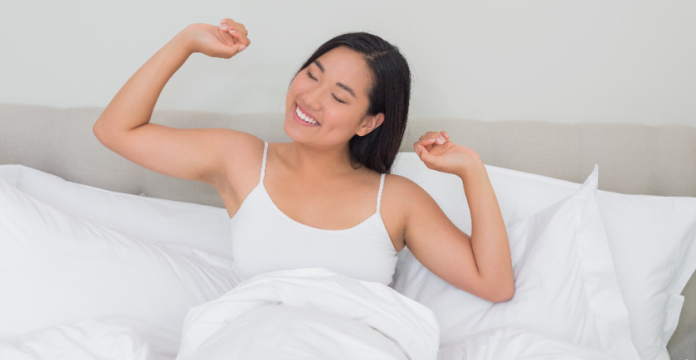
Changes in sleep patterns occur as we get older, with the most common ones being more trouble staying asleep and a harder time falling asleep than during previous decades. These sleep challenges, says the National Sleep Foundation, are part of the normal aging process. Now researchers say they may have a solution to these problems and it may even boost your memory as well: pink noise.
You have probably heard of white noise, which, according to noise/sound engineer Stéphane Pigeon, is not what most of us typically think of when we hear the term-comforting sounds that help us block out the surrounding environment. Pigeon explains white noise as the following:
"A true white noise deals in the second fundamental component of the sound wave: the frequency. Frequency is how fast the waveform is vibrating per second. That’s pretty technical. It’s easier to understand if you associate it with a single note. Take the middle C note on a keyboard: that note has a frequency of about 261.1 hertz. To make white noise, a sound engineer combines an equal amount of every frequency a human can hear. Imagine it like hundreds of musicians playing every single note you can hear at once at the same volume. That’s white noise."
What is pink noise?
Pink noise is a soothing, gentle sound composed of octaves possessing equal energy. It is essentially the background noise we are used to hearing every day and don’t even notice. Researchers at Northwestern University in Evanston, Illinois, discovered that if they synched pink noise to the brain waves of older men and women while they slept, the subjects experienced better quality of deep sleep as well as an improvement in memory.
Read about 10 signs you are sleep deprived
It’s been shown in numerous studies over the years that sleep is critical for converting short-term memories into long-term memories. The type of sleep that is necessary for this conversion is deep sleep, aka slow-wave sleep or non-dream-state sleep, which is part of the non-rapid eye movement sleep cycle. As we get older, the quality of deep sleep declines, which in turn can have a significant impact on memory as well as sleep quality.
Deep sleep is also important because it’s the stage when the body’s cells increase production and there’s a reduction in the breakdown of proteins. Thus this is a time of tissue repair, giving meaning to the term “beauty sleep.” Other benefits of deep sleep are a slowing of activity in the areas of the brain involved with emotions, social engagement, and decision-making, which suggests deep sleep helps people maintain an emotional balance.
How scientists used pink noise
Previous studies in young adults found a link between acoustic (sound) stimulation of deep sleep brain activity and an improvement in memory. These findings prompted Dr. Phyllis Zee, professor of neurology at the Feinberg School of Medicine at Northwestern, and her colleagues to try acoustic stimulation in a group of older adults to see how it affected sleep and memory.
Read about how you can make new brain cells and improve your memory
The study group consisted of 13 men and women ages 60 to 84 who each were subjected to one night of acoustic stimulation (involving pink noise synced to the participants’ brain waves) and one night of sham (placebo) stimulation. Each of these sessions were conducted one week apart. Before and after each of the sessions, the participants completed two memory recall tests.
The researchers found that:
- Memory recall was three times better after acoustic stimulation with pink noise than it was with the placebo stimulation
- The improvement in memory correlated with a boost in the quality of deep sleep and therefore an improvement in sleep quality
Bottom Line
Dr. Zee stated that the use of acoustic stimulation with pink noise “is an innovative, simple, and safe non-medication approach that may help improve brain health.” Use of pink noise could be a “potential tool for enhancing memory in older populations and attenuating normal age-related memory decline.” The next step is to use this approach over a longer time period and in in-home environments.
Try Morphus Sleepus, a non-habit-forming sleep supplement. This supplement addresses sleep issues during perimenopause and menopause by reducing cortisol levels, relaxing the body and mind, and promoting optimal sleep.
DISCLAIMER: This article contains affiliate links, which means that if you click on one of the product links, Naturally Savvy will receive a small commission so we can keep pumping out amazing articles like this one. Thank you so much for your support!
References
McKinney K. The art and science of white noise. Pacific Standard 2017 Mar 17
National Sleep Foundation. Aging and sleep
Papalambros NA et al. Acoustic enhancement of sleep slow oscillations and concomitant memory improvement in older adults. Frontiers in Human Neuroscience 2017 Mar 8











